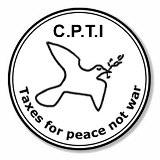Led by Rosa Packard (USA), about 15 participants
Report by Kay Ellison (USA)
In response to the United Nations declared Decade of Peace for promoting a culture of peace and non-violence for the sake of the children of the world,
Rosa Packard had members of our workshop read a comparison of the culture of war and the culture of peace.
The Culture of War <-> The Culture of Peace
Power understood as violence. <-> Power understood as truth force or transforming power.
Hierarchical Authority Chain of Command <-> Decision making includes and empowers all
People organized to defeat an enemy <-> People organized to meet human needs
Secrecy and censorship <-> Information available to all
Male dominance <-> Men and women equal partners
Economic exploitation for the gain of a few <-> Just distribution of resources to meet human needs
Rosa led us in three different exercises that would be appropriate to use when teaching people a culture of peace.
The first exercise was for us to introduce ourselves, giving a short example of an experience we've had that helped create a culture of peace among learners. This sharing of ourselves helped us to learn more about each other's homeland, work situations, but also what helped motivate us to learn and teach peace. It was felt that this exercise, because each person got to speak and had to reflect on what he or she was going to say, was helpful in building community, a culture of peace.
Rosa's second exercise was called an empathy exercise,
written by Paulo Freire. In this exercise a question is posed to the group, each person answering the question on a piece of paper. The papers are exchanged secretly. Then each person takes a turn pretending to be the original writer. This helps the reader to be empathetic toward the writer. The other people in the group respond to the writing. This allows the original writer of the piece to get feedback without being put on the spot or to feel threatened. We found this exercise helpful in not only learning about each other and getting practical answers to situations, but useful for getting into deeper discussions and relationships quickly.
Rosa's last exercise was a listening exercise. We were given a question and a moment to reflect to form an answer. Then we each found a partner with whom to share our answer. The rule of this exercise was to only listen, not to give any response—positive or negative. No interrupting!
Each person was given 3 minutes of uninterrupted time. Three minutes of being able to speak without being interrupted seemed enough to be able to get the answer across in a meaningful way. We noticed this exercise again helped the people of our workshop to get to know each other quickly.
These exercises would be easily used among people of all ages in any number of situations. The questions can be changed to suit age levels, experiences and situations.
Rosa then gave a quick overview of several educational ideas.
- Using art to teach how Jesus was born in a war tax time. Flemish artist Pieter Brueghel's painting illustrates this in a beautiful and revealing way.
- Using New Testament references about war tax.
- An activity with high schoolers,
Stories of Peacemaking.
High school aged students from the United Nations who did this with Rosa most often told stories that came from their own high schools. - Websites of groups that are involved in peace education can be used for more teaching ideas. These will be on the CPTI website at: www.cpti.ws.
